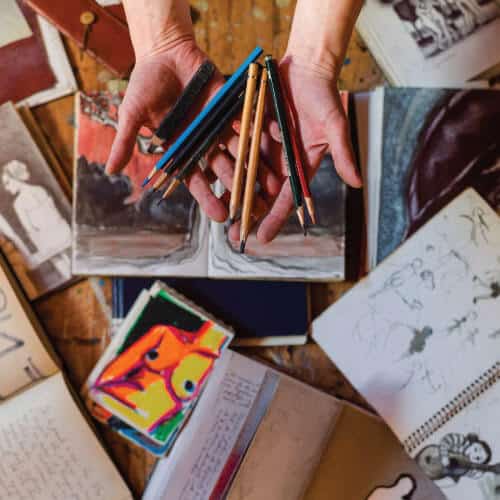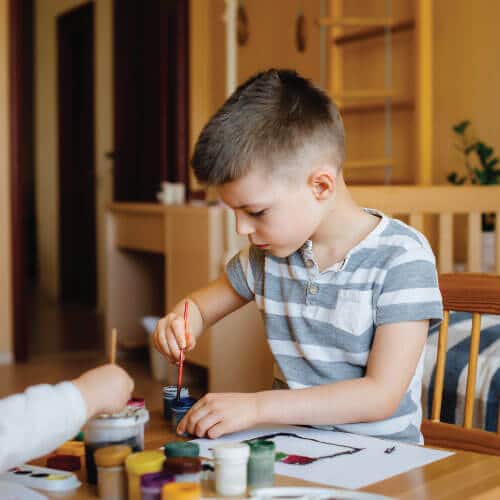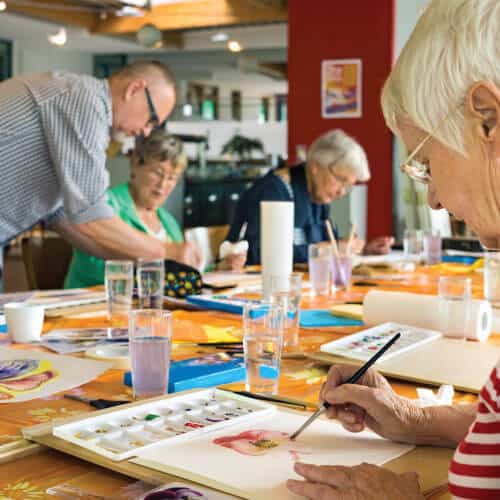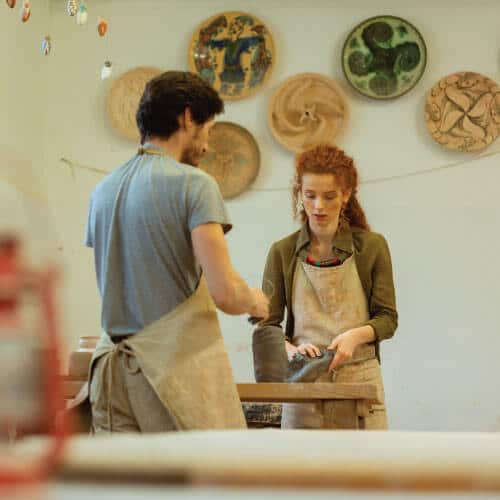What is Art Therapy?
Art Therapy is an important therapeutic method that relies on visual and tactile expression to facilitate lasting change and growth. Art therapy integrates creative expression through visual art media with psychotherapeutic techniques to improve mental, physical and emotional well-being, by facilitating self-expression and developing new coping strategies.
What art media is used in Art Therapy?
The creative tools used are varied, but include drawing, painting, craft, colouring, sculpting, or collage.
How does Art Therapy work?
As clients create art, they may reflect on what they have made and discern how it makes them feel. By exploring their art, people discover ideas and beliefs that subconsciously may be affecting their thoughts, emotions, and behaviours. The process is completely person-centred, even in a group scenario. Sounds complicated and layered, but it’s simply about trusting the creative process and letting go. There is no need to be artistic or skilled because it is the act of creating that forms the therapeutic process.
Who is Art Therapy for?
Art Therapy is for everyone from 4 to 94 years old, for business groups or the public. It is effective in transforming individual and group dynamics, creating self-awareness, building self-esteem, and for assisting people with social and intellectual issues, spectrum disorders, mental health challenges, life-threatening illnesses, and survivors of trauma.
Some ideas about who would benefit, but not limited to:
• those who have experienced trauma at a pre-verbal stage (early childhood)
• kids who lack the vocabulary to express themselves and teenagers who don’t enjoy talking
• survivors of trauma who are unable to verbalise painful events
• adults who find it difficult to express their feelings
• corporate groups who don’t have time to destress or who need to learn to work with each other, or effect change
• migrants who lack local language
• elderly, ill or palliative patients who may not have the energy to talk
What does a session look like?
We begin by checking in with you, and see if there is anything urgent you would like to express. If not, we offer art materials appropriate for the issues you are working on, your head space and emotional state at the time. There is art making, and if required, time to engage with the finished product. Insights are integrated and strategies outlined to encourage more positive thinking, effective behaviours and emotional rebalancing. If necessary, journaling may be encouraged between sessions.
Do I need to bring my own art materials?
No need to bring your art materials. We have oodles and oodles of paints, paper, craft materials and art supplies you probably never knew existed. Art supplies are on us.
What do I do when I arrive?
There are soft comfy sofas in a peaceful, feng shui designed space where you can take a moment out of your busy schedule to sit, breathe and prepare yourself for your art therapy session. Your art therapist will come out to the front lobby to meet you and then bring you into the art therapy room.
What if I am not arty?
Ah, so I hear that you think art therapy is only for the arty? Not so, my friend. It is about using the right side of the brain to create an expression of the blocks that are restricting you from moving forward. The messier the art, the clearer your heart will be.
What do I do whilst my child is doing art therapy?
As much as you may love to be a fly on the wall in your child’s art therapy session, you also probably know that it’s best not to. Kids may behave differently when not in eye sight of their parents, and that’s a good thing. Art therapists get to engage with the authentic side of children and allow them to express whatever is on their mind in a non-judged, confidential space where there are no expectations. The art therapist will welcome you both in the foyer, then gently guide your child to the art therapy room. During that time you can make a cuppa, buy a cuppa, take a walk, read or catch up on all those phone messages that await you. After the session, the best advice is not to ask them what they did but rather how it was? No need to see their art, question it or display it. It is their visual diary and often they may not even like what they have done. That’s ok because it is a true expression of what’s happening for them on the inside. That’s art therapy.




